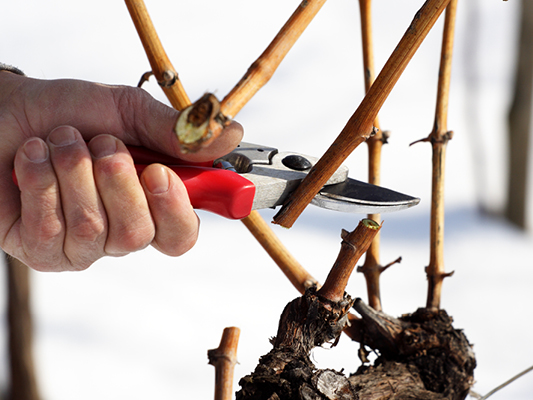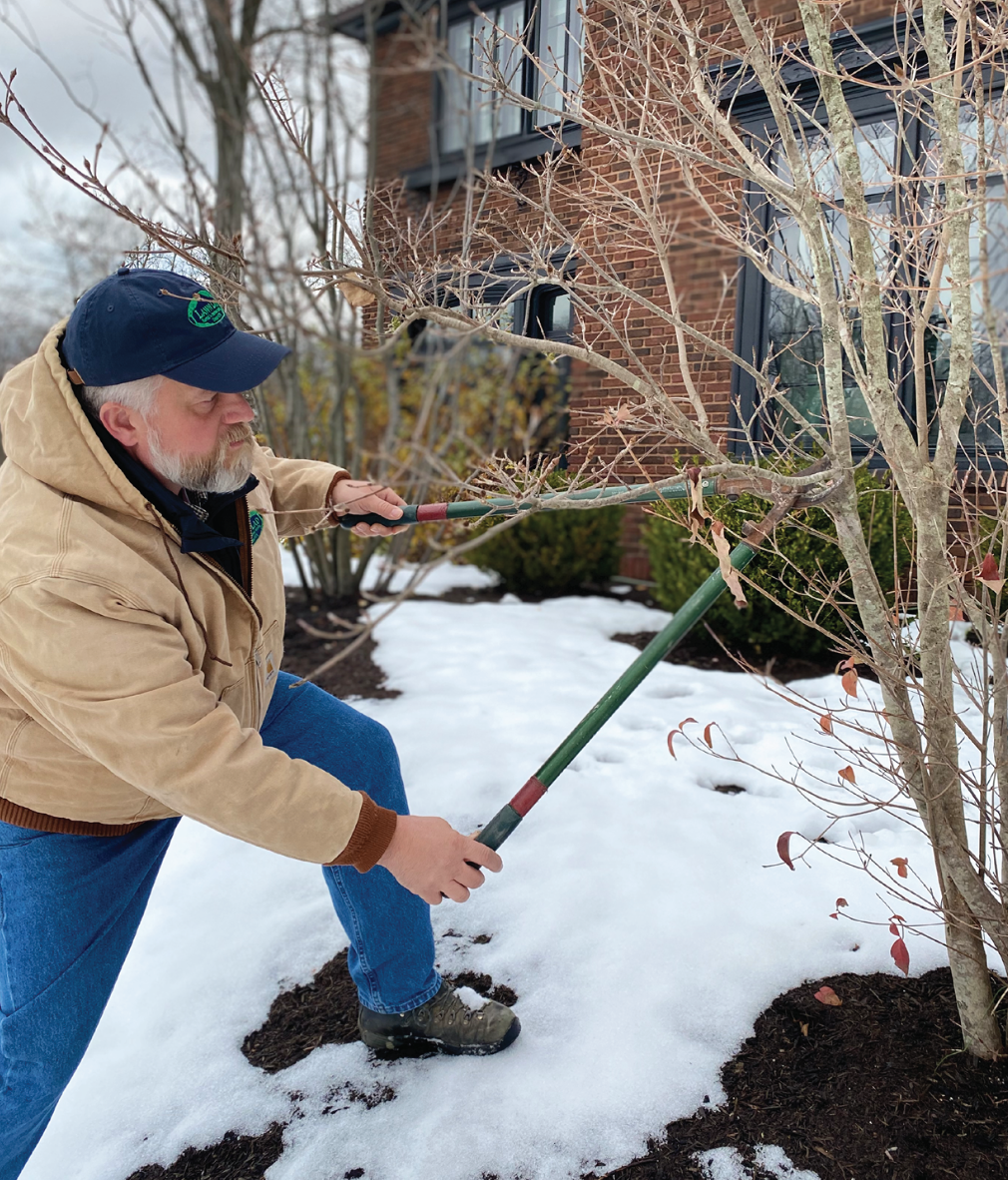Dormant pruning is done during the cold months of the year while the plant is inactive. The best timing for structural, rejuvenating, or corrective pruning is late January through early March. Pruning in late fall or early winter should be avoided. Soil temperatures are still warm and the plant is still actively transferring its energy stored in the canopy to the root system. Pruning at this time robs the plant of vital stored energy. Heavy fall pruning is not advised because it may encourage new growth that may not have time to harden off before cold weather sets in, potentially causing frost damage to the new growth. One major exception is spring flowering ornamentals, which are best pruned after they flower and before they form flower buds for the following year. The other exception is removing any dead, diseased or damaged branches when you notice them regardless of the time of year.
Controlling Growth
Dormant pruning helps to maintain a plant’s size in a limited space, and it revitalizes older, woody plants. Plants that are pruned during dormancy are generally more vigorous and healthy than plants that have major pruning during the growing season. Dormant pruning reduces the amount of pruning and shearing needed in summer. There are three main types of pruning. Corrective pruning redirects growth to achieve a desired shape and a more natural looking plant. Preventative pruning removes dead, diseased or damaged plant material, as well as problematic branches such as those overhanging walkways or growing into buildings and homes. Rejuvenating pruning is done by heading back heavy growth and thinning crowded older plants to encourage new growth.
ENVISION RESULTS
Before starting, have a vision for what your pruning will accomplish so you are careful to prune the correct way to achieve your goals. When pruning, follow these steps:
1) Remove dead, diseased and damaged wood from the plant.
2) Remove any crossing or rubbing branches that might cause future injury.
3) Thin and head back according to the plant’s natural growing characteristics.
Thinning prevents ornamentals from becoming top heavy and more susceptible to winter snow damage and it encourages the plant to fill in the lower areas with new growth.
Know the plant
Before pruning, determine what the plant can handle. Some plants need to be pruned gingerly, while others benefit from a vigorous pruning. In general, it is best not to prune more than a third of any ornamental or tree, and in many cases removing a fifth of the plant is more appropriate. Rejuvenating pruning usually involves a three- to five-year pruning plan. As the plants become revitalized, some additional maintenance pruning during the summer months may be necessary to remove unwanted growth.

